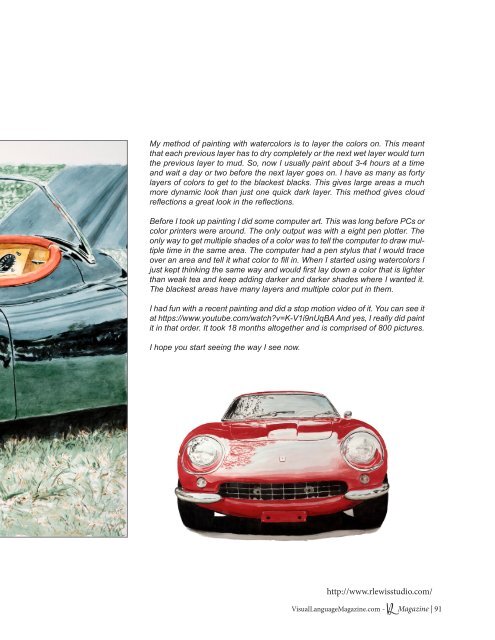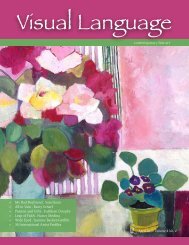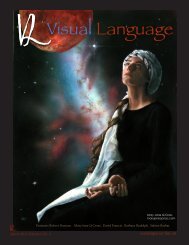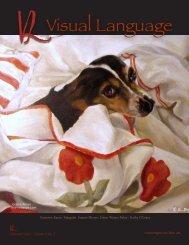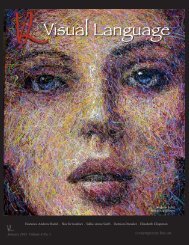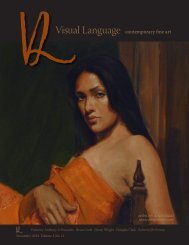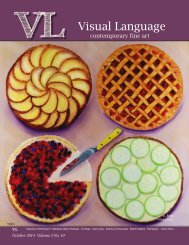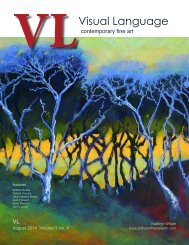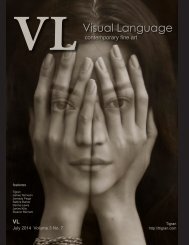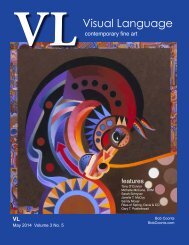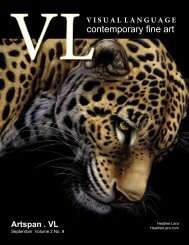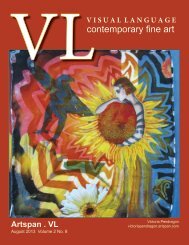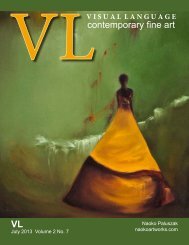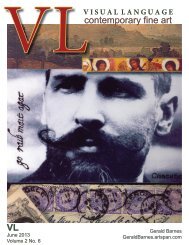Visual Language Magazine Contemporary Fine Art Vol 3 No 12 December 2014
Vol 3 No 12 Visual Language Magazine Contemporary Fine Art featuring holiday art, toys, transportation and more. Cover Artist is Rainer Andreesen. Featured are the Artists of Texas in a Holiday Greeting, Visual Language studio visits with Rainer Andreesen, Angela Hardy, Richard Lewis, David Kalbach; and Vincent Wray, our Barry W. Scharf feature and more. Visual Language Magazine is published through Graphics One Design ©2014. Visual Language is the common connection around the world for art expressed through every media and process. The artists connect through their creativity to the viewers by both their process as well as their final piece. No interpreters are necessary because Visual Language Magazine crosses all boundaries. Visit our main website to see back issues or research past artist. http://visuallanguagemagazine.com
Vol 3 No 12 Visual Language Magazine Contemporary Fine Art featuring holiday art, toys, transportation and more. Cover Artist is Rainer Andreesen. Featured are the Artists of Texas in a Holiday Greeting, Visual Language studio visits with Rainer Andreesen, Angela Hardy, Richard Lewis, David Kalbach; and Vincent Wray, our Barry W. Scharf feature and more. Visual Language Magazine is published through Graphics One Design ©2014. Visual Language is the common connection around the world for art expressed through every media and process. The artists connect through their creativity to the viewers by both their process as well as their final piece. No interpreters are necessary because Visual Language Magazine crosses all boundaries. Visit our main website to see back issues or research past artist. http://visuallanguagemagazine.com
Create successful ePaper yourself
Turn your PDF publications into a flip-book with our unique Google optimized e-Paper software.
My method of painting with watercolors is to layer the colors on. This meant<br />
that each previous layer has to dry completely or the next wet layer would turn<br />
the previous layer to mud. So, now I usually paint about 3-4 hours at a time<br />
and wait a day or two before the next layer goes on. I have as many as forty<br />
layers of colors to get to the blackest blacks. This gives large areas a much<br />
more dynamic look than just one quick dark layer. This method gives cloud<br />
reflections a great look in the reflections.<br />
Before I took up painting I did some computer art. This was long before PCs or<br />
color printers were around. The only output was with a eight pen plotter. The<br />
only way to get multiple shades of a color was to tell the computer to draw multiple<br />
time in the same area. The computer had a pen stylus that I would trace<br />
over an area and tell it what color to fill in. When I started using watercolors I<br />
just kept thinking the same way and would first lay down a color that is lighter<br />
than weak tea and keep adding darker and darker shades where I wanted it.<br />
The blackest areas have many layers and multiple color put in them.<br />
I had fun with a recent painting and did a stop motion video of it. You can see it<br />
at https://www.youtube.com/watchv=K-V1i9nUqBA And yes, I really did paint<br />
it in that order. It took 18 months altogether and is comprised of 800 pictures.<br />
I hope you start seeing the way I see now.<br />
http://www.rlewisstudio.com/<br />
<strong>Visual</strong><strong>Language</strong><strong>Magazine</strong>.com - VL <strong>Magazine</strong> | 91


